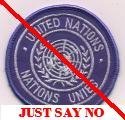FDA Inspects Wrong Chinese Factory
The good news is that FDA officials were in China to look into the safety of a Chinese-made drug that's found in heparin, a blood thinner made by Baxter International, that's been linked to four deaths due to allergic reactions. The bad news? They actually evaluated the wrong factory.
The next time you reach for your prescription bottle, remember that it's been approved by the Keystone Kops.
Read more of Dr. Douglass's column, "How will you be affected by the latest FDA mix-up?"
And with an ever increasing reliance on Chinese manufactured drugs comes an ever larger concern over the safety of our drugs.
Phyllis Schlafly, in an article "China Trade: Patents, Poisons, Prescription Drugs," writes about the importance of, and the rapid growth of, its' pharmaceutical industry.
In her article she claims, "China is the world's biggest supplier of counterfeit, misbranded, substandard and unapproved pharmaceutical products to the United States. A dozen Chinese companies were producing Viagra until Pfizer finally won its patent protection lawsuit."
She also states:
China has picked biotech as the new engine to continue its economic phenomenon. The Chinese government is supporting biopharmaceutical enterprises politically and financially, helping the biopharmaceutical industry to grow by 31.2 percent annually from 2001 to 2005.
China is marketing itself as an international outsourcing hub for life sciences and has become the largest vaccine manufacturing country in the world, capable of producing 41 vaccines. China already has more than 400 biopharmaceutical companies of different ownerships and more than 20,000 biotech research scientists.
That number is increasing as the Chinese government is steadily repatriating its scientists who were trained in the United States. The hai gui, skilled Western-trained Chinese returnees who studied and worked in the U.S. for many years, acquiring academic and commercial experience, are now going back to China to take important positions at salaries that are one-third to one-fifth of U.S. salaries.
An estimated 80 percent of the active pharmaceutical ingredients used to make drugs sold in the United States are imported, and an estimated 40 percent of finished drugs are made in foreign countries. The Chinese drug agency does not even oversee the making of pharmaceutical raw materials, called intermediates, which are the building blocks for active pharmaceutical ingredients.
The U.S. Food and Drug Administration is slated to inspect only 13 of China's 714 drug firms, 1.8 percent, this year. U.S. drugmakers are inspected at least once every two years, but there is no such requirement about imports, and Government Accountability Office spokeswoman Marcia Crosse admitted that 13 years can pass before a foreign manufacturer is visited even once.
It makes the argument from the geniuses in our government that we shouldn't buy cheaper Canadian imported drugs because we cannot guarantee their safety just a tad silly. Wouldn't you say?



































0 Comments:
Post a Comment
<< Home